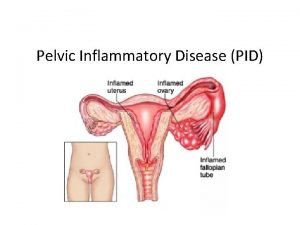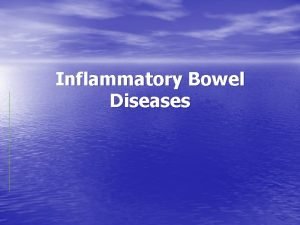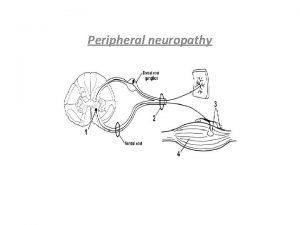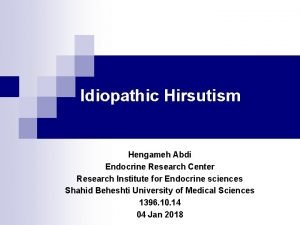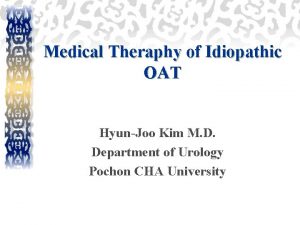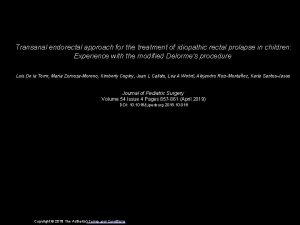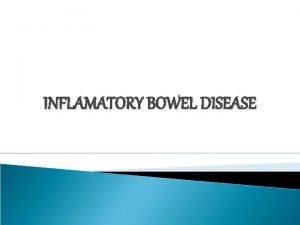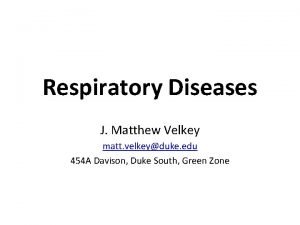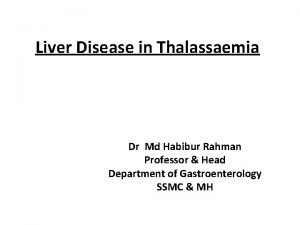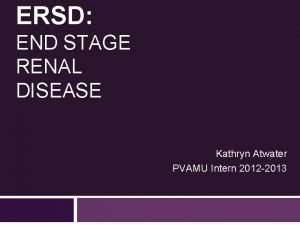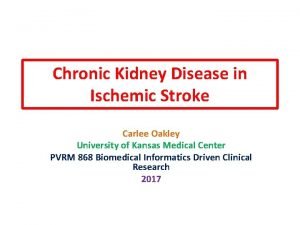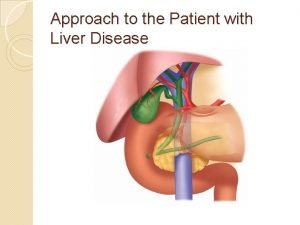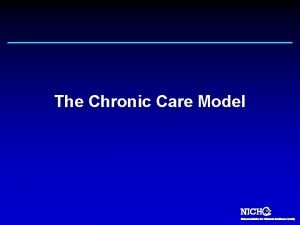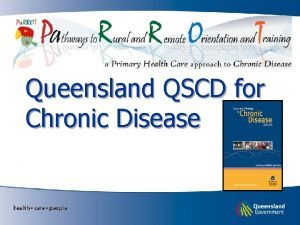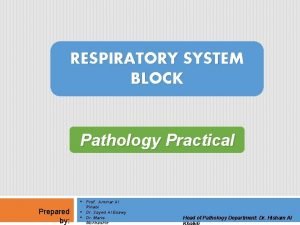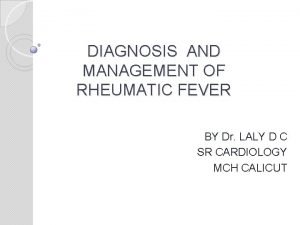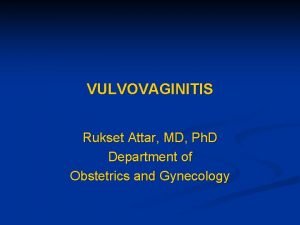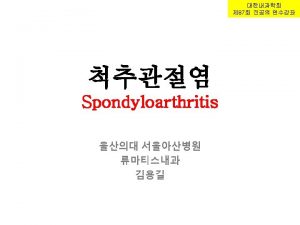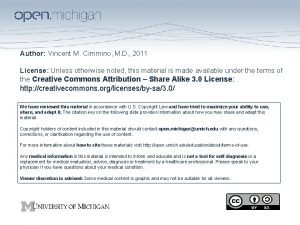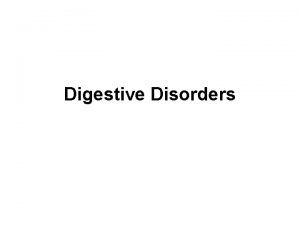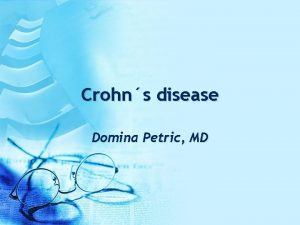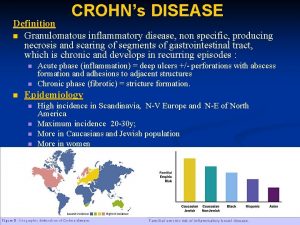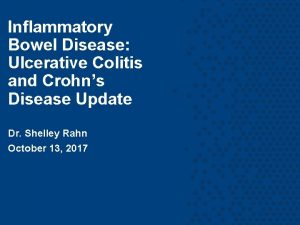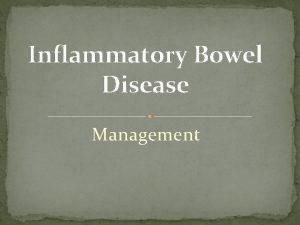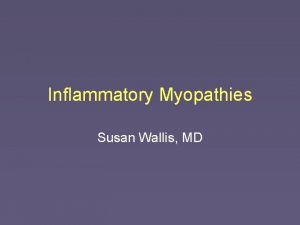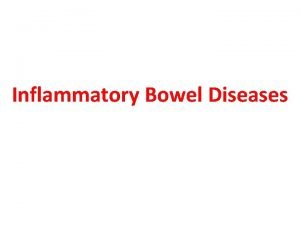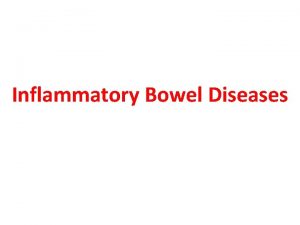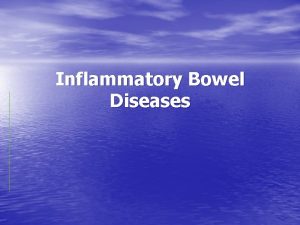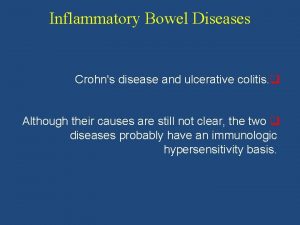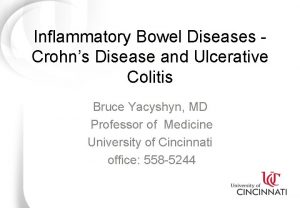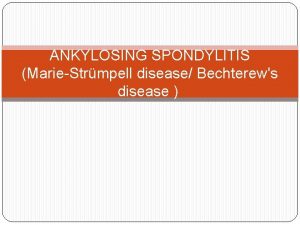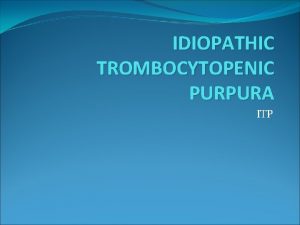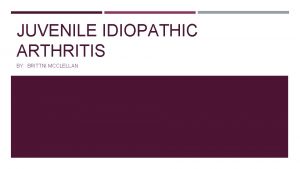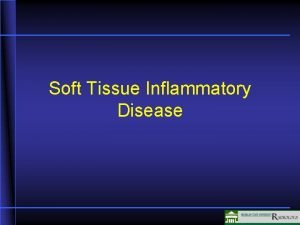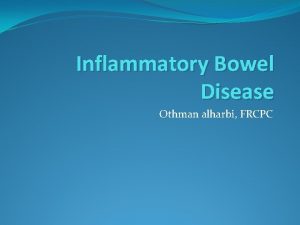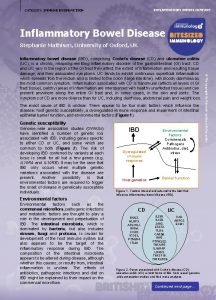Introduction l Crohns disease Idiopathic chronic inflammatory disorder































- Slides: 31


Introduction l Crohn’s disease – Idiopathic, chronic inflammatory disorder – Transmural inflammation – Intestinal stricture, fistulae, abscess l CD Incidence rate: 5 -7/100, 000 l Hospitalization rate: 27/100, 000 l Epitheloid granuloma – Hallmark histologic feature of CD – Macrophage, T lymphocyte, Cytokines(IL-12, IL-17, IL-23, IFN- ɤ, TNF-ɑ) – Unclear role in the pathogenesis of CD

Introduction l Relationship between Granuloma & disease behavior in CD – Conflicting results in multiple studies – M Φ type-1 inflammatory cytokines, TNF-ɑ Granuloma formation l Anti-TNF biologics : disrupt granuloma formation – neutralization of soluble TNF – inducing macrophage cell death by apoptosis or complement fixation l Anti-TNF exposure: correlated with reduced rates of granulomas l But, no histologic biomarkers

Introduction l 50~71% require surgery 10 years after the diagnosis l Reported reoperational recurrence rate – 20 -25% at 5 years after resection – 34 -39% at 10 years after resection l Prognostic factors influencing disease recurrence – Age at onset of disease, Sex, Family history of CD, Duration of CD before surgery, Medical treatment – Previous resection, Anatomical site, Extent of involvement, Length of resected bowel, Residual disease at the resection margins, Anastomotic technique, Perioperative blood transfusions, Post operative complications

Introduction l Aim of study – Possible predictive role of the presence of epithelioid granulomas in relation to disease severity in CD – Treatment effect of anti-TNF biologic agents on granuloma detection in CD. – Compare the number of recurrences and reoperations, the time to recurrence, reoperation of granulomatous vs nongranulomatous CD


Methods l The Inflammatory Bowel Disease Center at the University of Pittsburgh Medical Center , 3000 consented patients l Data : disease activity (Harvey Bradshaw Index [HBI]), disease behavior, quality of life (Short Inflammatory Bowel Disease Questionnaire), medication use, health care use l Entire cohort / Subset of patients undergoing surgical resection l granuloma/ no granuloma l Delta Lémann index (DLI) – Cumulative bowel damage – Improving (DLI <0), Stable (DLI = 0), Worsening (DLI >0) – Disease trajectory l Anti-TNF prescription during the year of the surgery

Methods l Statistical analysis – Differences between groups • Continuous variables : Mann-Whitney U test • Categorical variables : χ2 test or Fisher exact test – Variables that were statistically different in univariate multivariate logistic regression to test which variables were independently associated with the presence of granulomas.

Result

Result


L 1 ileal L 2 colonic L 3 ileocolonic L 4 upper tract

B 1 nonstricturing and nonpenetrating B 2 stricturing B 3 penetrating or perforating

DLI<0 DLI=0 DLI>0



Discussion l Relationship of the epithelioid granuloma with disease severity in CD l Granulomatous CD patient correlated with multiple markers of disease activity and severity markers of CD – ↑ Use of steroids, narcotics, immunomodulators, and biologic medications. – ↑ Inflammatory biomarkers, clinically active disease, worse quality of life, and higher health care use. l Granuloma can be used as a biomarker of disease severity more aggressive therapy may be considered in these patients with CD l Wide range of clinical outcomes to granulomas in a large CD patient cohort followed over multiple years

Discussion l Lower percentage of granulomatous patient(12. 8%) – Significantly lower than what has been reported historically – Possible effects of medications, specifically anti-TNF biologic agents. – Ethnic and racial variation l Infliximab granulomas↓ on surgical resection specimen. l Granulomatous CD may respond better to treatment with infliximab


Methods l Comprehensive literature search – 1950~2009 comparing granulomatous vs nongranulomatous – Me. SH : “Crohn disease, ” “recurrence, ” “reoperation, ” “granuloma, ” “comparative study. ” l Study selection criteria – Had to compare granulomatous & nongranulomatous CD l Data extraction – 2 reviewers independently extracted from each study l Exclusion criteria – No clear outcomes – Considerable overlap between authors, centers, patient cohort l Outcomes of Interest and definitions 1. 2. 3. 4. Number of recurrences of CD Number of reoperations due to recurrence of CD Time to recurrence (rate of recurrences) Time to reoperation (rate of reoperations)


Result (2236) 21 studies (1050) (1186)

Result Sensitivity analysis : modified Newcastle-Ottawa Scale (> 6): 7 / >1997 : 8/ >100 p : 8

Result

Result

Result

Result

Discussion l Granulomatous CD – Recurrences ↑ – Reoperations ↑ – Shorter disease-free interval l Supports the hypothesis – Epithelioid granulomas characterize more aggressive clinical course. l Targeting predisposing factors – QOL ↑, more accurate prognosis of disease progression l Granuloma : “valuable predictor “ – Need for more aggressive management to reduce recurrences in patients with granulomatous CD.

Conclusion l Observational design limits cause-effect relationships between variables. l Causal relationship between the granuloma and disease activity remains unclear. l Single tertiary referral center with a predominantly non. Hispanic white population l Infliximab vs Adalimumab

Conclusion l Careful interpretation – Retrospective nature – Significant heterogeneity l Further studies – Granulomas identified at diagnosis vs later in the disease course. – Diffuse granulomas (≥ 3 sites) vs Only 1 or 2 sites granulomas. – Efficacy of more aggressive prophylactic treatment – More rigorous surveillance – Prognostic model granuloma, histopathologic biomarkers

 Crohn's disease
Crohn's disease Pelvic inflammatory disease men
Pelvic inflammatory disease men Pelvic inflammatory disease
Pelvic inflammatory disease Ulcerative colitis vs chrons
Ulcerative colitis vs chrons Ideopathic peripheral neuropathy
Ideopathic peripheral neuropathy Idiopathic hirsutism
Idiopathic hirsutism Idiopathic oat
Idiopathic oat Pediatric surgery
Pediatric surgery Crohns disese
Crohns disese Bowel inflamation
Bowel inflamation Chronic granulomatous disease
Chronic granulomatous disease Stigmata of chronic liver disease
Stigmata of chronic liver disease Jewish chronic disease hospital study pdf
Jewish chronic disease hospital study pdf Chronic kidney disease near atwater
Chronic kidney disease near atwater Stigmata of portal hypertension
Stigmata of portal hypertension Nih score
Nih score Peripheral stigmata of cld
Peripheral stigmata of cld Nonalcoholic fatty liver disease
Nonalcoholic fatty liver disease Kate lorig stanford
Kate lorig stanford Wagner model of chronic disease management
Wagner model of chronic disease management Chronic disease
Chronic disease Decompensated cirrhosis
Decompensated cirrhosis Chronic disease
Chronic disease Emphysema lungs
Emphysema lungs Vijaya's echo criteria
Vijaya's echo criteria Dsm 5 munchausen by proxy
Dsm 5 munchausen by proxy Desquamative inflammatory vaginitis
Desquamative inflammatory vaginitis Mechanical vs inflammatory back pain
Mechanical vs inflammatory back pain Pflegmona
Pflegmona Lecucytosis
Lecucytosis Treatment of inflammatory breast cancer
Treatment of inflammatory breast cancer Post inflammatory erythema
Post inflammatory erythema


